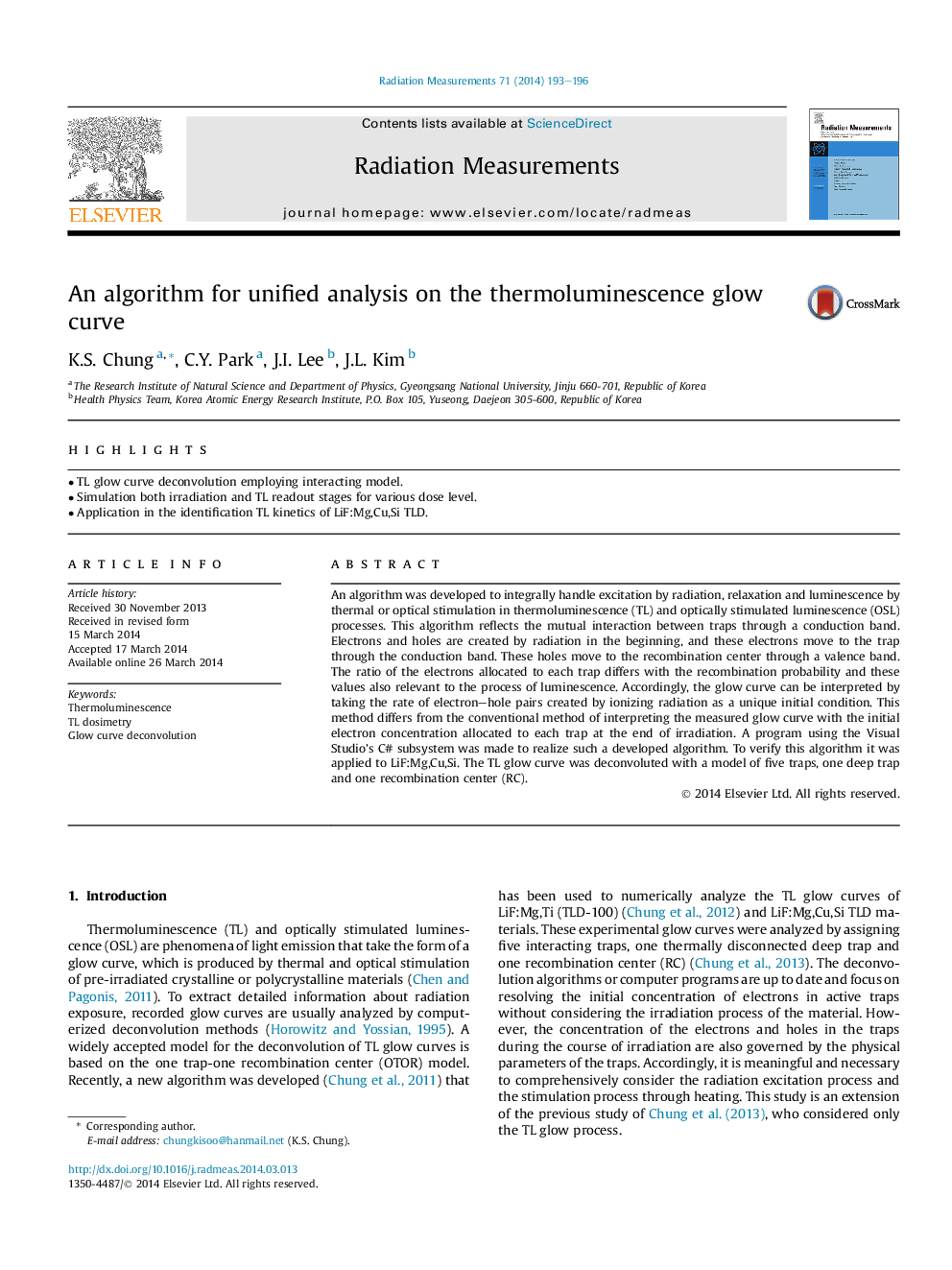| Article ID | Journal | Published Year | Pages | File Type |
|---|---|---|---|---|
| 1880579 | Radiation Measurements | 2014 | 4 Pages |
Abstract
An algorithm was developed to integrally handle excitation by radiation, relaxation and luminescence by thermal or optical stimulation in thermoluminescence (TL) and optically stimulated luminescence (OSL) processes. This algorithm reflects the mutual interaction between traps through a conduction band. Electrons and holes are created by radiation in the beginning, and these electrons move to the trap through the conduction band. These holes move to the recombination center through a valence band. The ratio of the electrons allocated to each trap differs with the recombination probability and these values also relevant to the process of luminescence. Accordingly, the glow curve can be interpreted by taking the rate of electron-hole pairs created by ionizing radiation as a unique initial condition. This method differs from the conventional method of interpreting the measured glow curve with the initial electron concentration allocated to each trap at the end of irradiation. A program using the Visual Studio's C# subsystem was made to realize such a developed algorithm. To verify this algorithm it was applied to LiF:Mg,Cu,Si. The TL glow curve was deconvoluted with a model of five traps, one deep trap and one recombination center (RC).
Related Topics
Physical Sciences and Engineering
Physics and Astronomy
Radiation
Authors
K.S. Chung, C.Y. Park, J.I. Lee, J.L. Kim,
